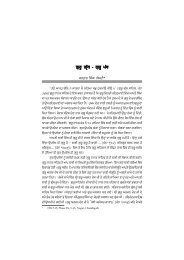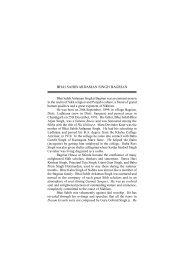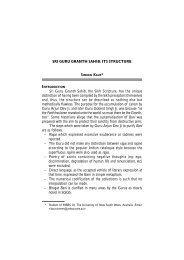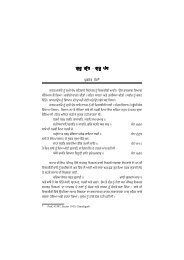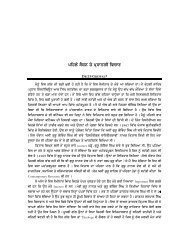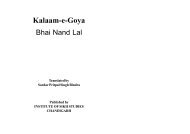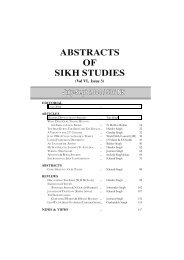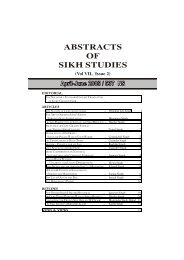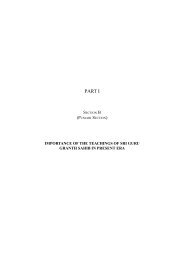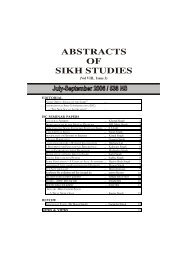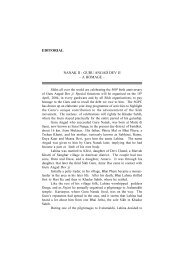You also want an ePaper? Increase the reach of your titles
YUMPU automatically turns print PDFs into web optimized ePapers that Google loves.
106ABSTRACTS OF SIKH STUDIES : JAN-MARCH <strong>2006</strong> / 537-38 NSbetween Hindu India and Muslim-dominated Pakistan. The book isan anthology <strong>of</strong> articles on the subject <strong>of</strong> Freedom Struggle in Punjab.It would have added to its value if one or two articles by some historianfrom the West Punjab also had been included it.However, a valuable analysis <strong>of</strong> cause <strong>of</strong> communal riots inPunjab is provided by Dr Kirpal Singh, an expert on the Partition <strong>of</strong>Punjab in the chapter The Price that the Punjab is paid for Freedom. Thelearned doctor opines that the root-cause <strong>of</strong> communal riots in Punjabwas not the communal strife, but the denial <strong>of</strong> opportunity to theMuslim League, the single largest party in Punjab to form a government.It caused such frustration amongst the Muslims that they felt thatthere was no alternative left but to stir up strife. He writes: “If SirKhizar had not formed the ministry and the League leaders had beenleft with some hope <strong>of</strong> <strong>of</strong>fice, they would have been compelled, justin order to gain power, to adopt a more conciliatory attitude towardsthe minorities. In that case, they would have been less tempted to stirup strife.” The learned historian also describes the movement <strong>of</strong>refugees, Muslims as well as non-Muslims, and the attacks on themduring the journey. He quotes O H K Spate to assert that these wereenforced movements <strong>of</strong> the people on a scale absolutely unparalleledin the history <strong>of</strong> the world. According to the author, peaceful exchange<strong>of</strong> population was possible.Another valuable contribution to this book is an article by V PMenon, which deals with the politics <strong>of</strong> the rulers <strong>of</strong> States in Punjabwhich were later merged to form the PEPSU. He was the stateSecretary. While Giani Kartar Singh favoured merger <strong>of</strong> these sixstates, namely, Patiala, Nabha, Jind and Faridkot, Kapurthala andMalerkotla in East-Punjab, another <strong>Sikh</strong> leader Udham Singh Nagokebitterly opposed this merger. The British, before partition, had triedto create a third force by merging these states with Jammu and Kashmirand some Princely States <strong>of</strong> Rajasthan. But on account <strong>of</strong> strongopposition by the Maharaja <strong>of</strong> Patiala, Yadvindra Singh, and differencesbetween the Raja <strong>of</strong> Faridkot and the States People Conferences, thePresident did not allow the British plan to materialise. According toMr V P Menon, “Besides, <strong>Sikh</strong> politics were in so fluid a state that wefelt that, until they became crystallized, there was immediate need fora Union <strong>of</strong> all the Punjab States under the control <strong>of</strong> the Government



